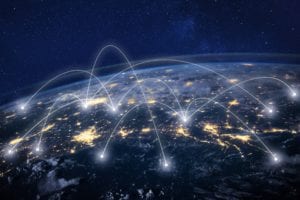The demand on data centers has never been higher, and it’s only going to grow. How do we build and run today — for tomorrow? The Data Center Tech Bytes podcast series features big industry conversations that take place in just a small amount of time. Join us as we begin to re-define the data center of the future, and get ready for smarter and more sustainable operations to support greater connectivity and capacity
In episode 10, Ivonne Valdes, Schneider Electric’s Vice President of Global Sales, Cloud and Service Provider Segment, speaks with Nancy Novak, Chief Innovation Officer at Compass Datacenters and Dr. Julie Albright, USC digital sociologist and Infrastructure Masons Board Member, about the digital divide.
The gap between those who have access to high speed internet and those who don’t has gone largely unnoticed for too long. The pandemic, however, has brought to light how critical connectivity is to everyday life. Through this lens, the divide is glaring. Connectivity is nearly as important as the air we breathe and taken for granted about as much.
Dr. Albright reveals an astonishing fact. She says, “I’ve spent my career looking at the intersection of behavior and technology. While millennials grew up in a world with internet, the next generation are growing up in a mobile world. We’re seeing infants who don’t yet have the ability to speak . . . pinching, poking, opening programs and playing on tablets and smartphones. They’re learning digital skills for acquiring language, and that’s going to rewire the neural pathways in their brain. They’re going to think differently than you and I do.”
This seismic changes in how people learn, and subsequently relate and communicate, and the need for connectivity exacerbated by Covid-19 means many students will be left behind. “I’ve seen college students unable to turn in papers because they use Starbucks for Wi-Fi access, and Starbucks was closed. Some of these kids are never going to catch up and may wind up dropping out of school. This should be of great concern to us all,” she urges.
 Closing the Digital Divide
Closing the Digital Divide
Nancy agrees. She believes the crisis will be a catalyst to closing the divide faster and sees Compass partners and customers stepping in to help. The company has been working through Infrastructure Masons — a group in which IT professionals focus on the optimization of infrastructure for the advancement of the economy, environment, and society — to not only highlight the need for better infrastructure but also access, affordability and digital literacy.
“In the US alone, around 4 million households in rural areas don’t have access to the internet. We partner with institutions like vocational schools and libraries to increase awareness and availability as well as provide training for digital skills,” she says.
In fact, Infrastructure Masons is now tackling the digital divide as part of its mission. The organization created a task force to find solutions and is leading the way in coordinating and amplifying member companies’ efforts.
Listen to the Episode for More Insights
The impact of the digital divide goes beyond just students. It affects small businesses as well. Left unchecked, it will profoundly exacerbate the talent shortage. To learn more about what the Infrastructure Masons task force has accomplished so far and what you can do to help fill the gap, listen to the full Data Center Tech Bytes episode now.



